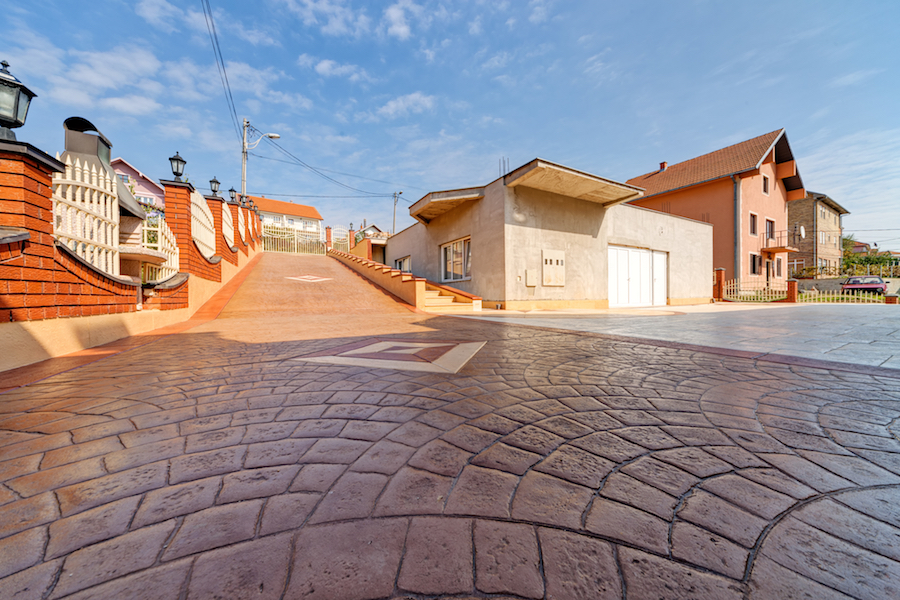Finishing concrete

Concrete is a versatile construction material. It can even be used as decorative flooring, which is where finishing comes into play. What exactly does it mean to finish concrete? Finishing is the step in the setting process that gives concrete a certain color and texture.
Concrete stamping
Imprinting a shape in concrete, or stamping, is just one of many kinds of concrete finishes. This is meant to mimic the texture and pattern of stonework or bricks. A pre-formed shape is pressed into the concrete to mold it into the desired appearance.
Colored hardeners
A powder can be added to the surface of fresh concrete to change its color. It can be applied by evenly coating the entire surface or using a stamping technique to add smaller detailing to the concrete. For instance, if but some small lettering or another accent color needs to be added. There are other ways to add color to concrete as well, including using an integral color that’s added to the concrete before it’s poured.
Dyes, sealers, and stains
The previous finishing techniques are applied before the concrete cures. But dyes, sealers, and stains are applied after the concrete has set. Dyes are applied during polishing and allow for brighter colors. Sealers are meant to protect the concrete from water damage and breaking down while also accentuating the color of the concrete. These are typically applied very soon after the concrete cures. Stains are similar to seals in that they change the color of the concrete, but they work by creating actual chemical reactions with materials in the concrete. New and old concrete both can be treated with stains or dyes to give it new life.
Brooming
Brooming is a technique used to give the concrete texture. Adding broom bristle patterns to the surface of concrete gives people more traction to walk around and keeps the floor or sidewalk from getting too slick when wet.
Sanding
Countertops made of concrete are often treated with sanding, though this technique isn’t often used for floors or sidewalks. If the sanding area is much larger than a countertop, you may have to use a grinder instead off a sander. Sanding smoothes out the surface of the slab, helps with leveling, and often reveals larger aggregates used in the mixing process to give the surface of the concrete a more unique pattern.
For more information on concrete finishing or other services, contact us at 405-285-9800. We will be glad to answer your questions or help you solve any problems with your restoration project.
